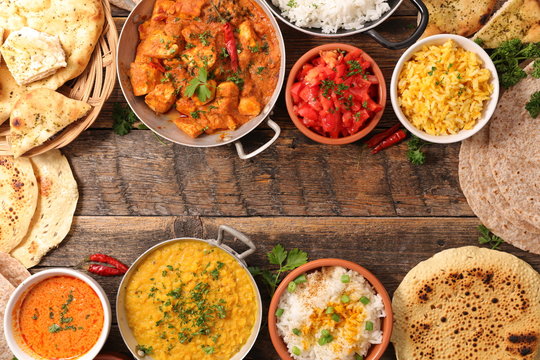In a world where time seems to move faster every day, taking a step back to appreciate the simple joys of life can be incredibly rewarding. One such pleasure is dining, an activity that goes beyond mere sustenance. Mindful dining is about more than just food; it’s a way of savoring the experience and appreciating the company, setting, and cultural nuances that come with it. Whether you’re at a casual family dinner, a business lunch, or an elegant soiree, practicing proper dining etiquette is essential. This article delves into the art of mindful dining, offering guidance on how to approach meals with grace and respect in all social situations.
The Importance of Mindful Dining
Mindful dining is more than just observing a set of rules; it’s about appreciating the act of eating as a sensory experience. It encourages you to be present in the moment, fully engaged in the flavors, aromas, and textures of the food. Moreover, it respects the people you dine with and the cultural nuances surrounding the meal.
General Dining Etiquette
Arriving and Seating
When arriving at a dining event, it’s customary to arrive on time. Punctuality shows respect for the host and other guests. Wait to be seated or follow the host’s instructions. If it’s an informal gathering, wait for the host to start the meal before diving in.
Navigating the Place Setting
Understanding the place setting can be daunting, but it’s a crucial part of dining etiquette. Work from the outside in with your utensils. Your napkin should go on your lap, and it’s polite to wait until everyone is served before starting your meal.
Using Utensils Correctly
The way you use your utensils can say a lot about your dining etiquette. Hold your knife and fork correctly, and don’t slurp your soup. Cut your food into bite-sized pieces and never talk with food in your mouth.
Conversation Dos and Don’ts
Engaging in polite conversation is an essential part of mindful dining. Avoid discussing controversial topics, and be a good listener. Never interrupt someone while they are speaking, and keep your smartphone off the table.
Dining Etiquette in Various Settings
Casual Family Dinners
While family dinners may seem relaxed, being mindful still matters. Show appreciation for the meal, participate in conversation, and offer to help with the dishes.
Business Lunches
Business dining is an extension of your professional persona. Be punctual, discuss business matters after the meal, and follow the lead of your host or colleagues.
Formal Dinners
Formal dinners often come with a set of intricate rules. Familiarize yourself with these rules, including which utensils to use, when to start eating, and how to signal you’re finished.
International Dining Etiquette
Chopstick Etiquette in Asia
In Asian countries, chopsticks are the primary eating utensils. Learn how to use chopsticks properly and avoid cultural taboos.
European Continental-Style Dining
European dining can be more formal and involves specific utensil usage. Master the continental style of dining to feel at ease in European settings.
Middle Eastern Dining Customs
In Middle Eastern cultures, there are unique customs related to dishes and eating with your hands. Be aware of these traditions to show respect.
Mindful Dining for Special Diets
Vegan and Vegetarian Considerations
When dining with vegans and vegetarians, choose restaurants with suitable menu options. Be considerate and avoid making them feel like an inconvenience.
Food Allergies and Dietary Restrictions
Respect and accommodate dietary restrictions and food allergies. Communicate your needs to the host or restaurant staff in advance.
Children and Mindful Dining
Teaching children about mindful dining from an early age instills lifelong values. Encourage them to sit properly, use utensils, and engage in conversation.
Mindful Dining at Home
Practicing mindful dining at home fosters togetherness and appreciation. Create a pleasant dining environment and gather the family for shared meals.
Wine and Beverage Etiquette
Proper wine and beverage etiquette enhances the dining experience. Learn to pair wine with food and serve drinks at the appropriate temperature.
Dessert Etiquette
Savoring dessert is the grand finale of a meal. Use the correct utensils, enjoy your dessert slowly, and engage in dessert conversation.
Mindful Dining in the Digital Age
With the prevalence of smartphones, it’s essential to put them away during meals. Be present in the moment and engage with your companions.
Practicing Gratitude
End every meal with a sense of gratitude. Express appreciation for the food, the company, and the experience.
Conclusion
Mindful dining is not just a set of rules but a way of life that encourages us to appreciate every aspect of a meal. Whether dining with family, colleagues, or international friends, understanding and practicing dining etiquette can enrich the experience and enhance our relationships.
FAQs
1. What is the significance of mindful dining?
Mindful dining emphasizes being fully present during meals, savoring the experience, and showing respect for the people and cultures involved in the meal.
2. How can I navigate complex utensil usage in formal dinners?
Familiarize yourself with formal dining etiquette by observing and learning from others. It’s a valuable skill for various social occasions.
3. What are some international dining customs I should be aware of?
Different cultures have unique dining customs. It’s respectful to research and understand the etiquette of the region you’re dining in.
4. How can I accommodate guests with dietary restrictions?
Communicate with your guests beforehand to understand their dietary needs, and choose a Pakistani restaurant or prepare a menu that accommodates those restrictions.
5. Why is it important to teach children about mindful dining?
Teaching children dining etiquette fosters good manners and respect for others, which are valuable life skills.


